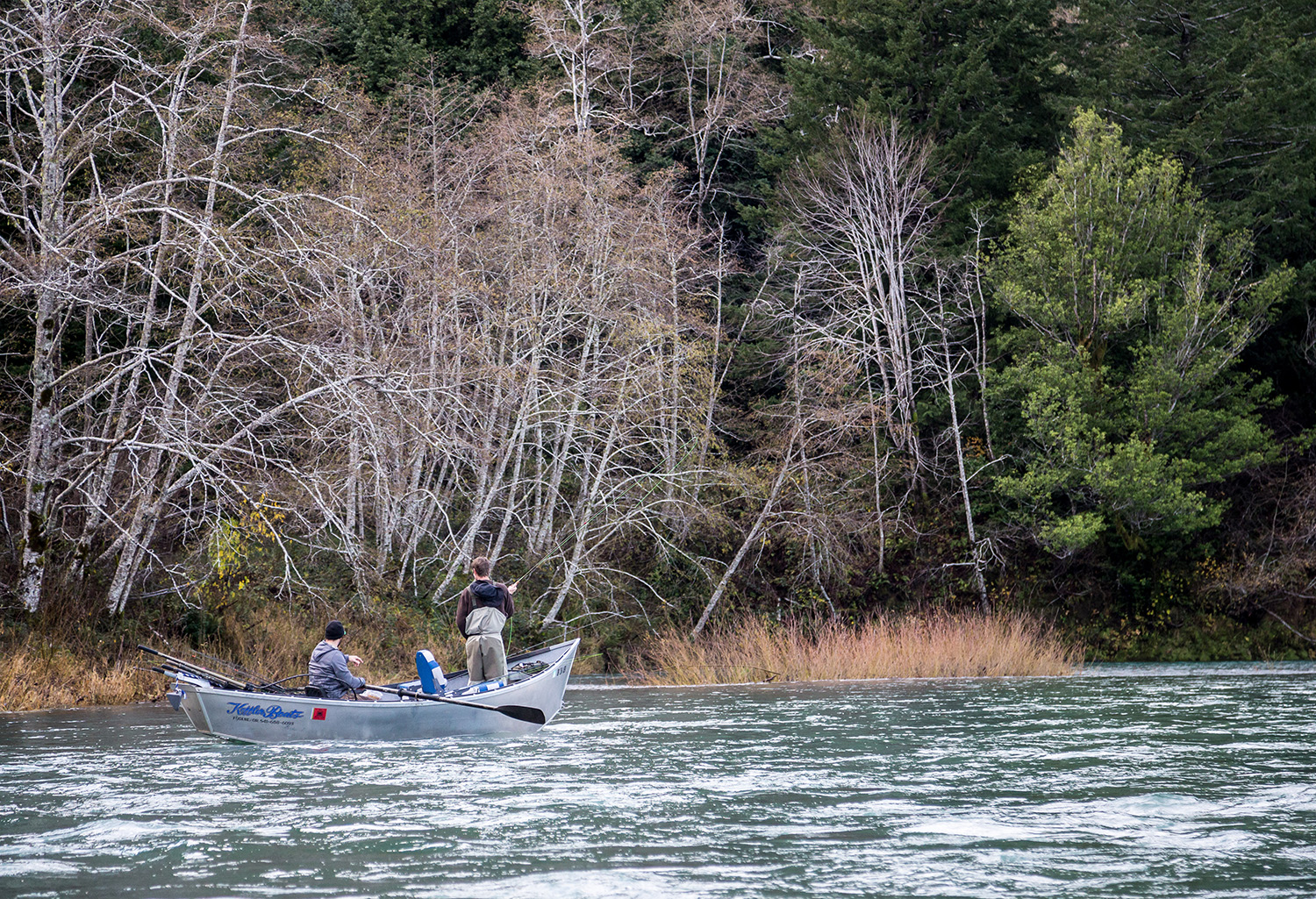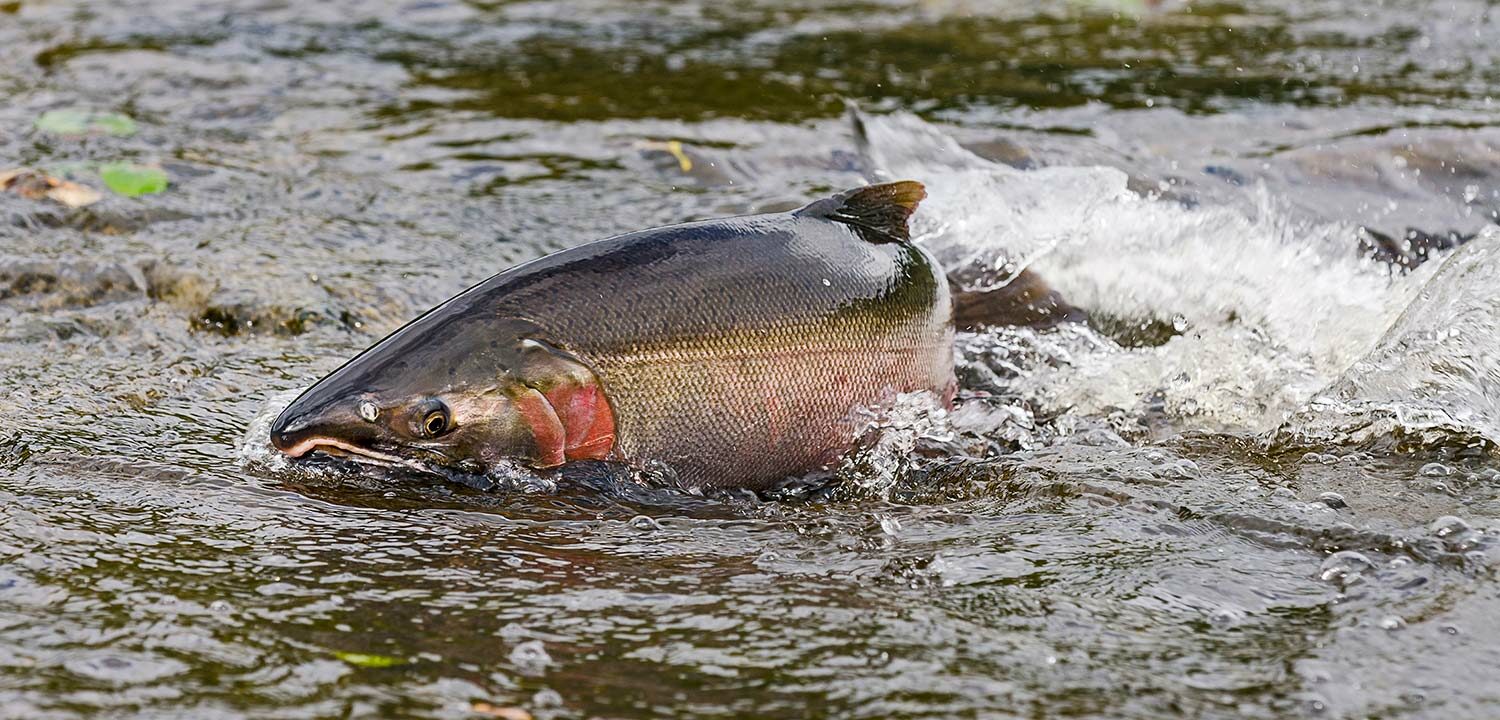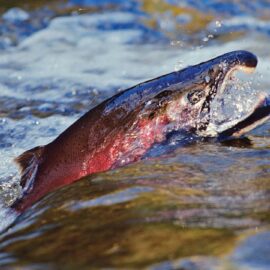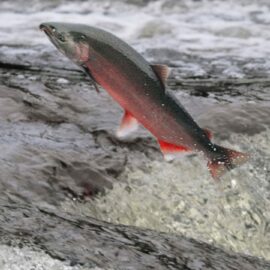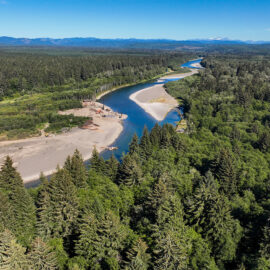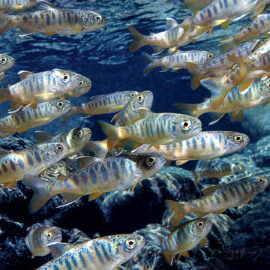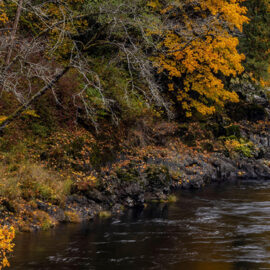Recovering coho so local communities can fish again.
The Coast Coho Partnership is a team of public and private partners, managed by the Wild Salmon Center, that convened in 2015 to accelerate the recovery of Oregon’s two coast coho runs.
Oregon’s coastal watersheds are largely comprised of farm and forestland with free-flowing rivers that are now mostly devoid of hatchery coho production. Coupled with increasing population trends, these conditions make Oregon Coast coho, in particular, uniquely poised for recovery. The partnership works with local teams to develop science-based action plans focused on high priority coho watersheds. To date, the Coast Coho Partnership has directed more than $10 million to put these plans into action.
Our ultimate goal is to recover Oregon Coast coho populations so that wild coho salmon can once again support recreational and commercial fisheries, promoting vibrant coastal communities.
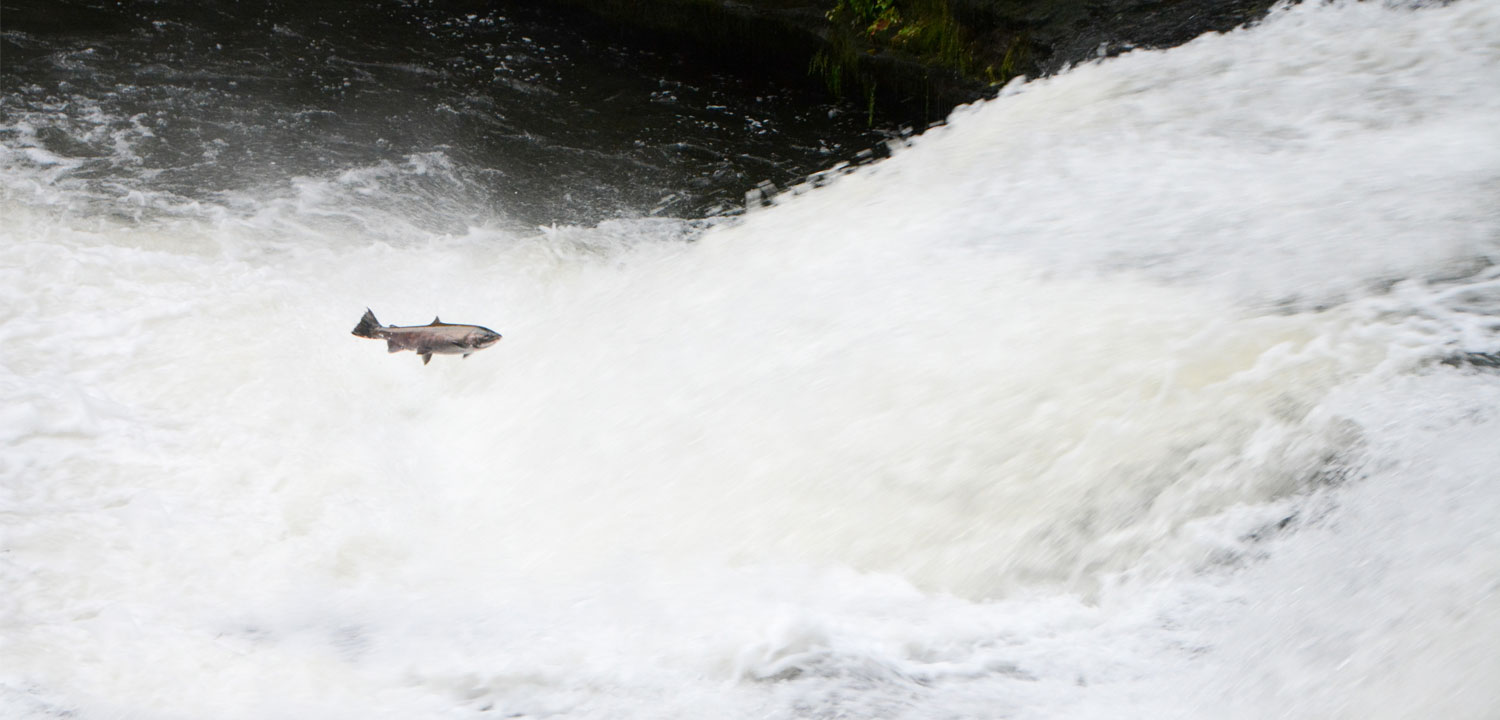
Why coho?
While most of Oregon’s coastal watersheds are intensively managed for farm and forest use, the region still boasts some of the most intact salmon ecosystems remaining in the lower 48. In addition to coho, coastal strongholds generate healthy populations of Chinook and chum salmon and steelhead trout. Because coho are in the watershed for a full year and rely on a range of habitat types, the restoration of coast coho habitats will often benefit these other Pacific salmon. In addition, largely intact coastal watersheds are more resilient to climate change and are good places to make habitat restoration investments.
To recover coast coho, targeted habitat restoration must also be complemented by improvements in farm and forest management, and the protection of critical habitats from development. In addition to prioritizing habitat restoration needs, coho recovery planning can help pinpoint needed management reforms, while preparing for threats on the horizon.
Recovery of Oregon Coast coho would allow it to be the first wild salmon run removed from the ESA.
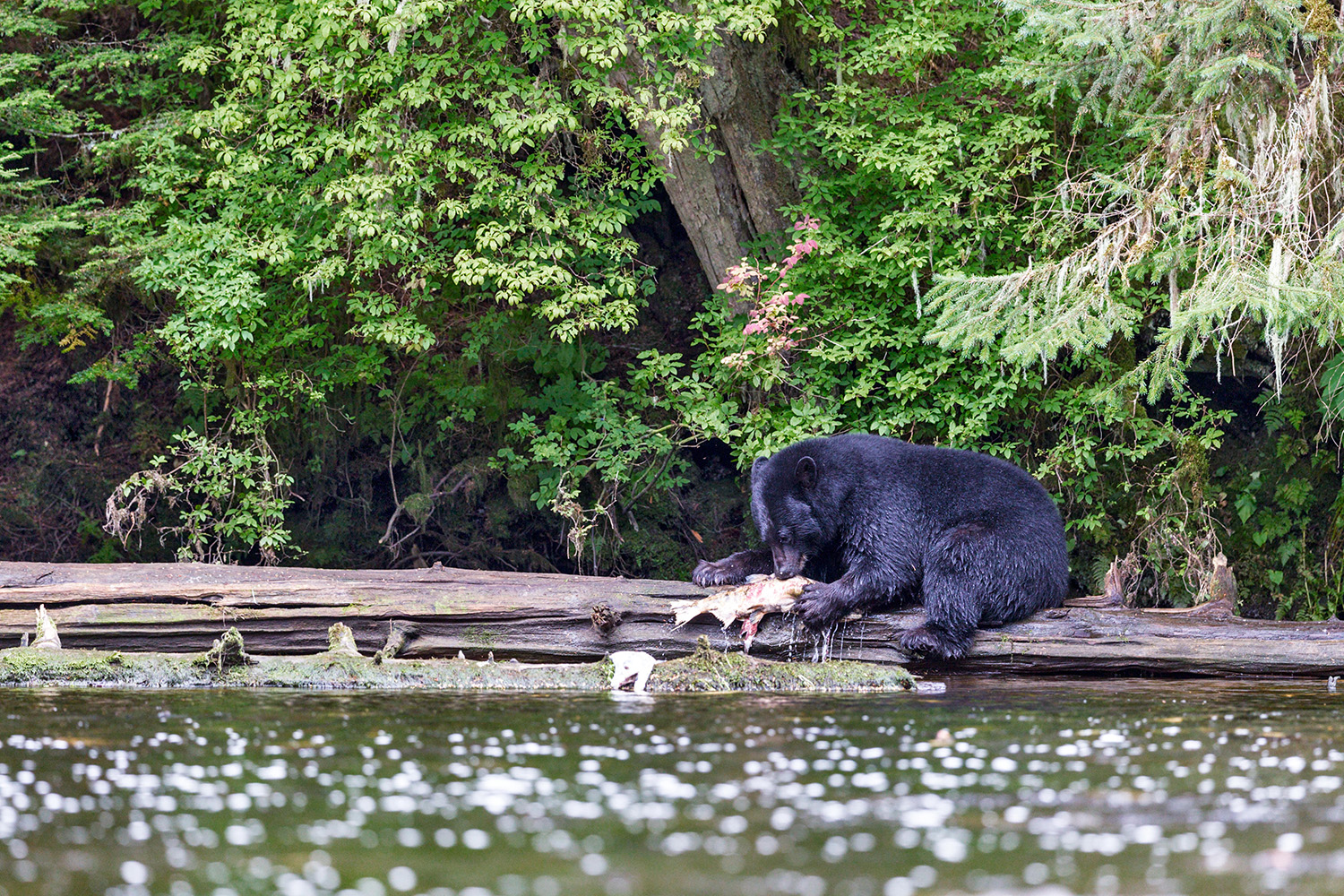
Support for local leadership
Beyond a broad federal mandate, the hard work of recovering coast coho remains local. Oregon coastal watersheds span hundreds of square miles, yet many of the partners focused on their restoration are small and capacity limited. Coordinating and leveraging projects across large watersheds is challenging.
By leading locally convened teams through the development of “Strategic Action Plans” (SAPs), WSC and the Coast Coho Partnership catalyze local efforts to prioritize, coordinate, and leverage habitat protection and restoration efforts. Developed at the population scale, each SAP combines cutting-edge modelling with the expertise of local scientists, managers, landowners, and other stakeholders. The final plans establish both a long term framework for watershed restoration, as well as a short term workplan designed to leverage funding for the first several years of project implementation. The Coast Coho Partnership works to raise these implementation funds, which are granted to the local partners.
A partnership at work
Starting in 2017, the partnership developed and began implementing plans for the Siuslaw, Nehalem, Coos, and Elk River watersheds (see full list of watershed plans): work supported in large part by grants from the National Oceanic and Atmospheric Administration (NOAA) and Oregon Watershed Enhancement Board. The first awards to local partners—along with matching funds provided by the National Fish and Wildlife Foundation—supported the construction of 28 beaver dam analogs in the Nehalem River, large-scale wood installation in the Siuslaw River, and floodplain reconnection on working agricultural lands in the Elk River.
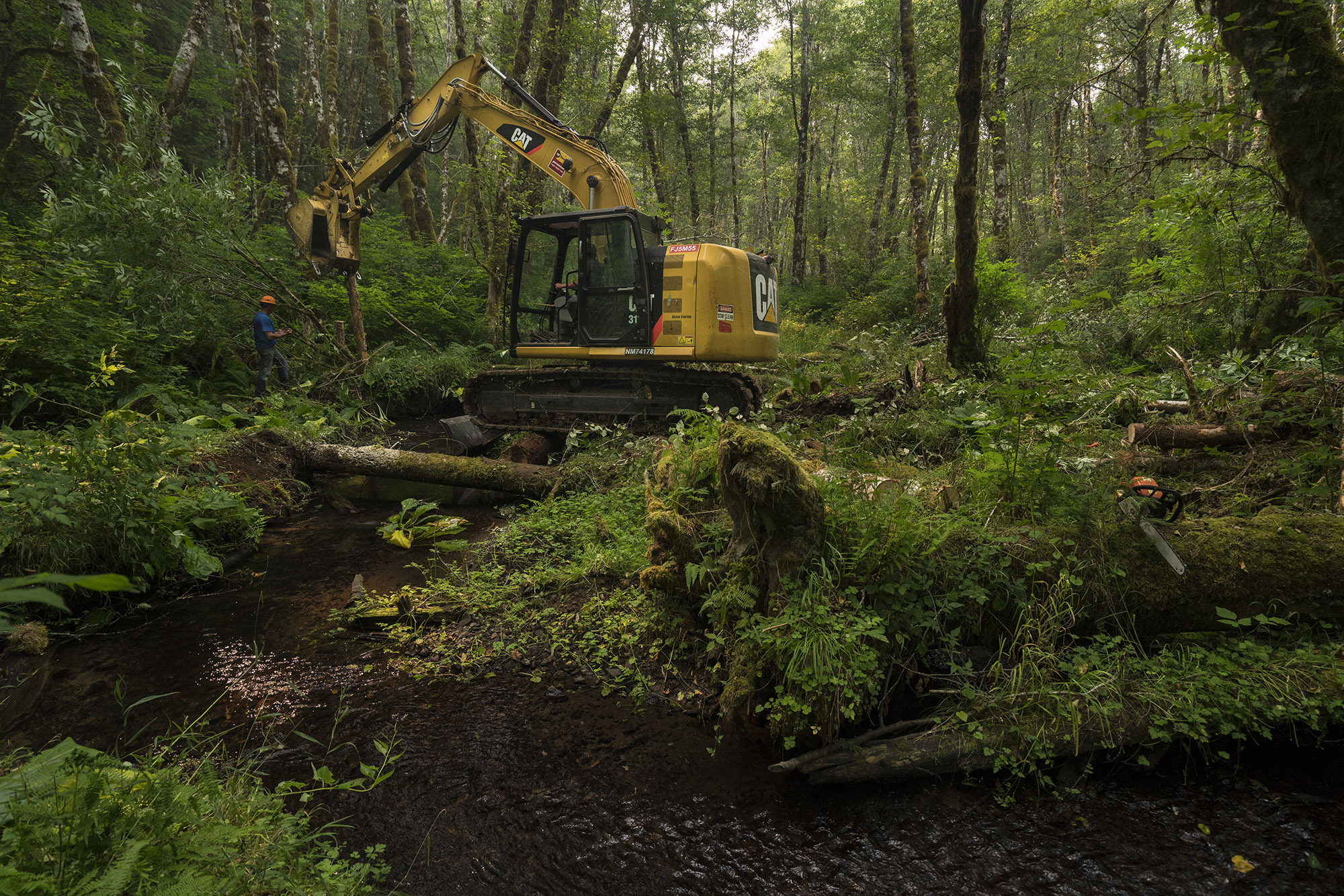
A second NOAA grant to WSC in 2019 supports the implementation of SAPs that are now under development in the Upper Rogue, Coos Bay, and Siletz River watersheds.
Says WSC Coastal Program Director Mark Trenholm: “Work remains, but we’re seeing partners at all levels—local, state, federal, tribal, and private—pulling in the same direction. We believe coho recovery is possible on the Oregon Coast, and that local communities will once again fish for these beloved salmon.”
The ultimate goal of the Coast Coho Partnership is to recover Oregon Coast coho populations so that local communities can once again fish for these beloved salmon.
